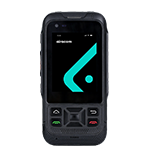Disaster Recovery
Protect your business with disaster recovery solutions
Disasters can strike at any time, and when they do, they can have a devastating impact on your business. That’s why it’s essential to have a disaster recovery plan in place to ensure that your business can continue operating in the face of a disaster.
At Airacom, we offer disaster recovery solutions designed to help businesses protect their operations and data in the event of a disaster. Our solutions are customised to meet the specific needs of your business, and we work with you to develop a plan that ensures your business can continue operating in the face of any disaster.
Disaster recovery scenarios
It’s important to identify the most common risks to your business operation
Natrual Disasters
Natural disasters, such as floods, earthquakes, hurricanes, tornadoes, wildfires, and severe weather events, are one of the most common risks that businesses face. These disasters can cause extensive damage to physical infrastructure and disrupt operations for extended periods of time.
Cyberattacks
Cyberattacks are becoming increasingly common, and they can cause significant damage to businesses. Ransomware attacks, phishing scams, and other types of cyberattacks can compromise sensitive data, disrupt operations, and cause significant financial losses.
Human Error
Human error or equipment failures are another common series of risks that businesses face. Mistakes such as accidental data deletion, incorrect configurations, or accidental damage to physical equipment can result in significant data loss or system downtime.
Power Outages
Power outages can result from a variety of factors, including severe weather, equipment failure, and cyberattacks. Power outages can disrupt operations, cause data loss, and damage physical infrastructure.
Disaster recovery solutions
The importance of disaster recovery planning
Disaster recovery planning is a critical component of any business’s overall risk management strategy. It involves identifying potential risks and developing a plan to mitigate those risks and minimise the impact of a disaster on your business.
Without a disaster recovery plan, your business is at risk of data loss, downtime, and revenue loss. A well-designed disaster recovery plan can help your business get back up and running quickly after a disaster and minimise the impact on your operations and your bottom line.
Types of business disasters and how to plan for them
Many types of disasters can affect a business, including natural disasters like floods, hurricanes, and earthquakes, as well as man-made disasters like cyberattacks, power outages, and equipment failures. To plan for a disaster, it’s essential to identify the potential risks and develop a plan to mitigate those risks.
Our team of experts can help you identify potential risks and develop a customised disaster recovery plan that addresses your specific needs. We can also provide ongoing support and maintenance to ensure that your plan is always up-to-date and effective.
Our disaster recovery solutions
We offer a range of disaster recovery solutions for SMEs and enterprise businesses designed to meet the needs of any business size from new startups to established businesses. Our solutions include:
Data Backup and Recovery: We provide secure data backup and recovery services to ensure that your critical business data is always protected.
Business Continuity Planning: We help you develop a customized business continuity plan that ensures your business can continue operating in the event of a disaster.
Cloud Disaster Recovery: Our cloud-based disaster recovery solutions provide secure and reliable data backup and recovery services that can be accessed from anywhere.
Disaster Recovery Testing: We conduct regular disaster recovery testing to ensure that your plan is effective and up-to-date.
Partner with us for your business disaster recovery needs
At our company, we understand the importance of disaster recovery planning and the impact that a disaster can have on your business. That’s why we offer customised disaster recovery solutions designed to meet the specific needs of your business.
With our disaster recovery solutions, you can rest assured that your business is protected and that you’ll be able to get back up and running quickly in the event of a disaster. Contact us today to learn more about our disaster recovery solutions and how we can help protect your business.
Disaster Recovery plan
Design a disaster recovery plan thats fit for your business
When designing a disaster recovery plan for your business, there are several important factors to consider. Here are the four major things to consider when creating a disaster recovery plan
Risk Assessment
The first step in creating a disaster recovery plan is to identify the risks that your business may face. This could include natural disasters like floods or fires, as well as man-made disasters like cyberattacks or power outages. Once you have identified potential risks, you can prioritize them and determine the best ways to mitigate each one.
Business Impact Analysis
A business impact analysis (BIA) is a critical component of any disaster recovery plan. It involves identifying the critical functions of your business and determining the potential impact of a disaster on those functions. By conducting a BIA, you can determine the recovery time objectives (RTOs) and recovery point objectives (RPOs) for each critical function, and create a plan that ensures that your business can continue operating in the event of a disaster.
Plan Development
Once you have identified the risks and conducted a BIA, the next step is to develop a disaster recovery plan that addresses each potential risk. Your plan should include procedures for data backup and recovery, as well as a plan for restoring critical business functions. It should also include procedures for communication and coordination during a disaster, as well as a plan for testing and updating the plan on a regular basis.
Plan Testing and Maintenance
Testing and maintenance are critical components of any disaster recovery plan. You should conduct regular testing to ensure that your plan is effective and up-to-date, and make any necessary updates or changes based on the results of your testing. You should also ensure that your plan is properly maintained and that all relevant employees are trained on the plan and their roles in executing it.
Related Products
Hybrid & Remote Working Solutions
Remote working is growing in popularity, so get ahead with your remote and hybrid working strategy to outpace your competition.
Workforce Management Software
The hybrid digital workspace has arrived. Plan, track, manage & collaborate across your frontline workers & business.
Microsoft Teams Managed Service
Get all the professional help and support to set up, manage and run your Microsoft Teams business services.
Business Connectivity
Review our dedicated business connectivity services. Adopt solutions that scale with your business.
IoT SIM Data Services
Connect your IoT sensors, connected objects, devices and remote and hybrid teams with 4G/5G LTE.
Migrate to VoIP
Five easy steps to migrate away from outdated PSTN or ISDN systems to VoIP unified comms.





















































